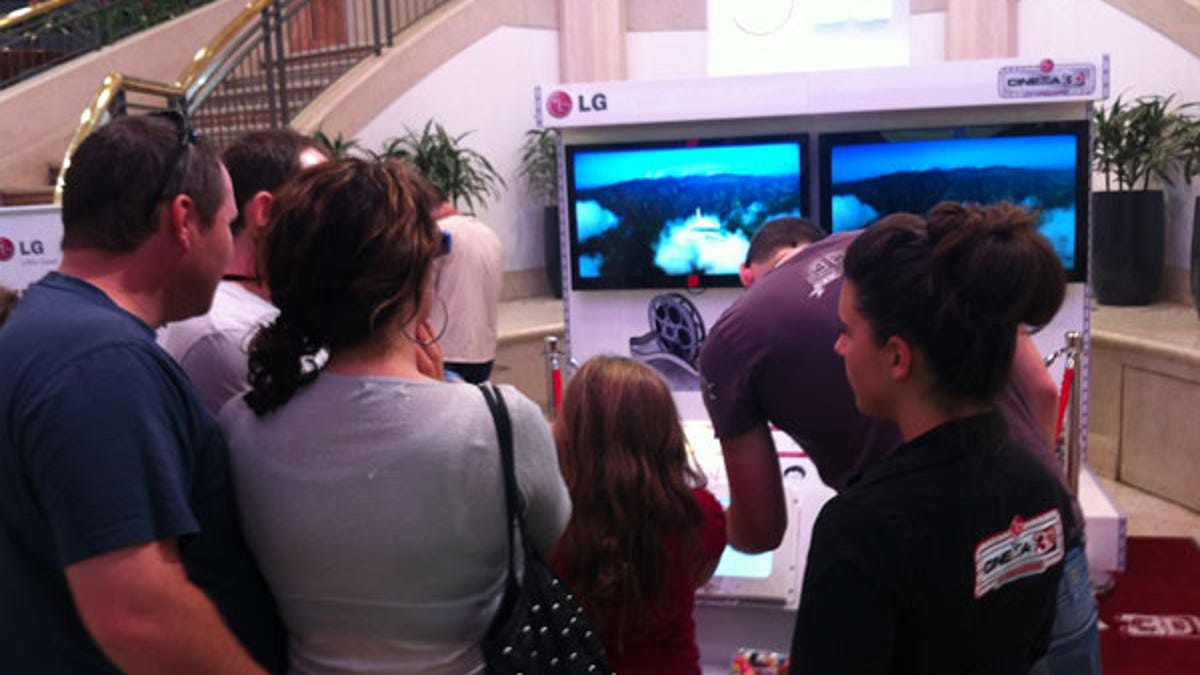Sony to LG: don't say passive 3D is better
Sony has challenged LG's recent study, which claims that 82 per cent of Australians prefer their Cinema 3D technology over rival active shutter options.

LG recently announced the results of an Australian preference test, conducted in Westfield shopping centres, where viewers strongly preferred their Cinema 3D TVs over competitors' 3D experiences. Now, according to the Sydney Morning Herald, Sony has sent legal threats to LG, challenging the test results, and claiming that it would be misleading to use these results as the basis for an advertising campaign.
The tests, conducted by TNS Global on behalf of LG, found that 82 per cent of Australians preferred LG Cinema 3D TV to the 3D technology offered by Samsung and Sony. LG's Cinema 3D is based on passive 3D glasses, the same basic polarised glasses as those used in cinemas. Sony and Samsung use active shutter 3D glasses, which are powered, and include LCD technology to block the changing images to alternate eyes.
Apart from the higher cost associated with active shutter glasses and the need to charge them, many argue that the general experience of passive glasses is more comfortable than with active shutters. This study, which saw 4000 Australians in a blind test of the different brands, showed overwhelming preference for the passive experience.
LG's rival Samsung has already taken LG to court over claims that their Cinema 3D TVs are brighter than those of their rivals. But the challenge did not stop LG from continuing to make such claims in their advertising earlier this year.
Rivals have also claimed that LG's Cinema 3D experience is not delivering true 1080p pictures. In the case of active shutter glasses, entire 1080p images are shown to each eye in an alternating fashion. With passive, each eye is being shown an alternate line of the picture at the same time. Rivals argue that this means each eye is only seeing an effective 540 lines of image, which the brain then merges into a single image. Whether such a method of display can claim to be "FullHD 3D" is the core of the criticism.
We recently explored whether specs really matter when it comes to devices these days. The arguments from Sony and Samsung against LG's Cinema 3D claims may just be focused on a technical debate over raw specs. Whatever the technicalities, LG's study shows a significant preference for passive when it comes to watching 3D; specs be damned.
While the majority of 3D-capable TVs being sold today are based on the active shutter technology, most people rarely use the 3D mode that these televisions offer. If 3D is ever going to become a more regular part of people's home-entertainment experience, it seems as though passive 3D is the technology that most people really want to see.

